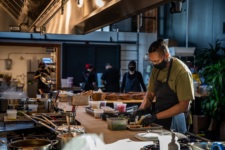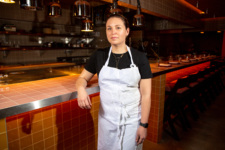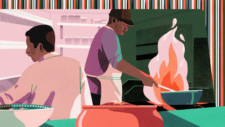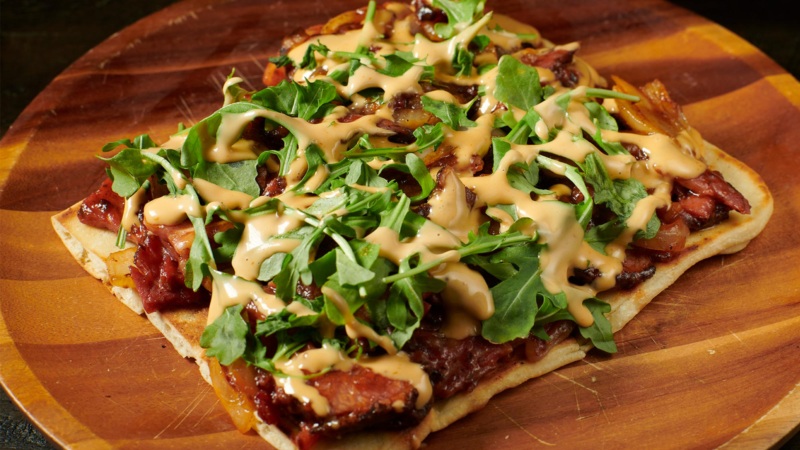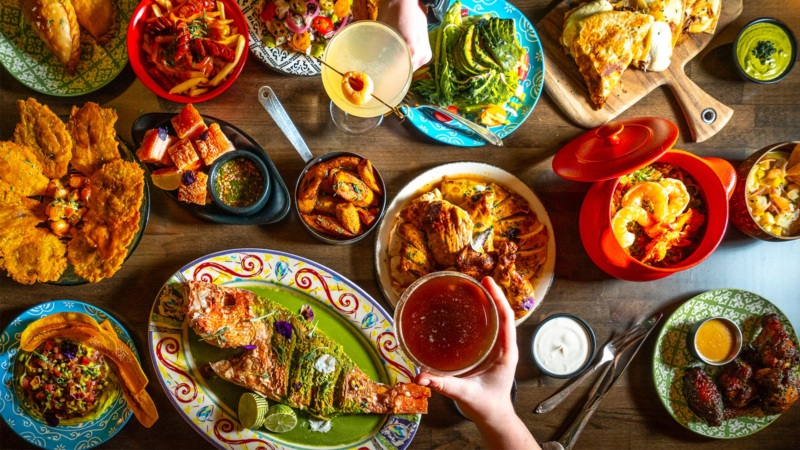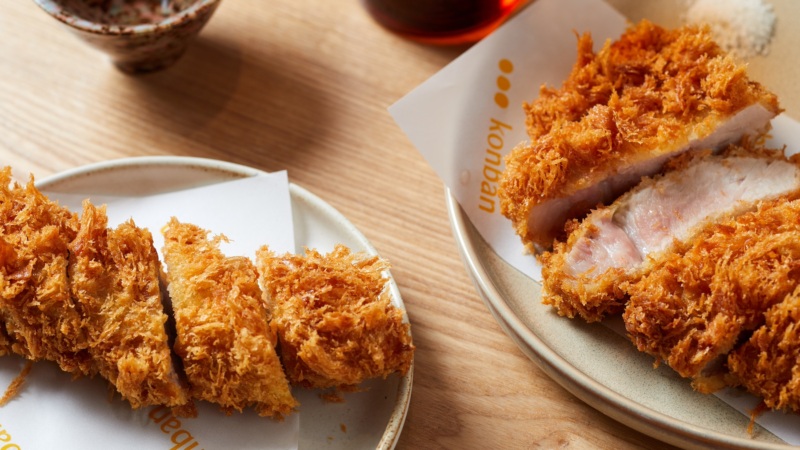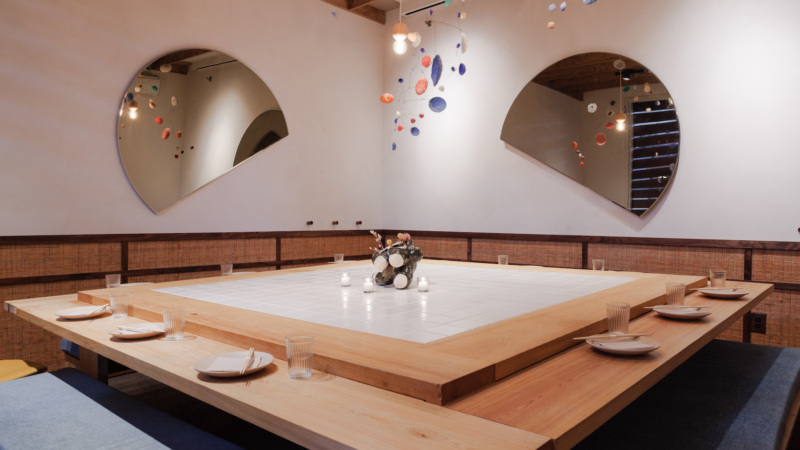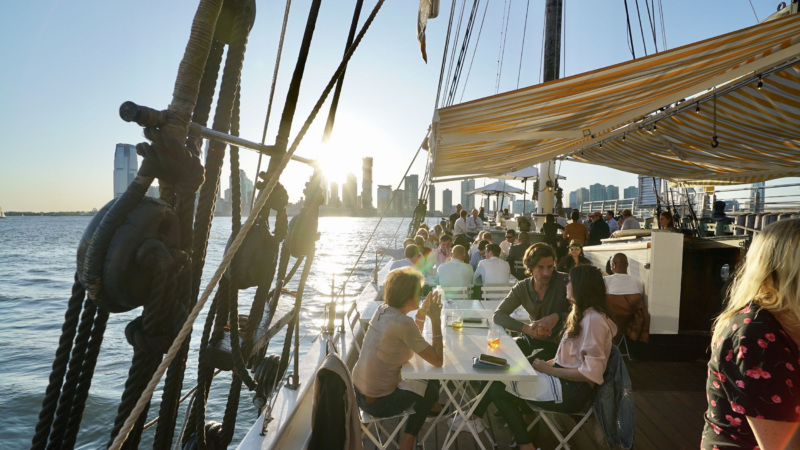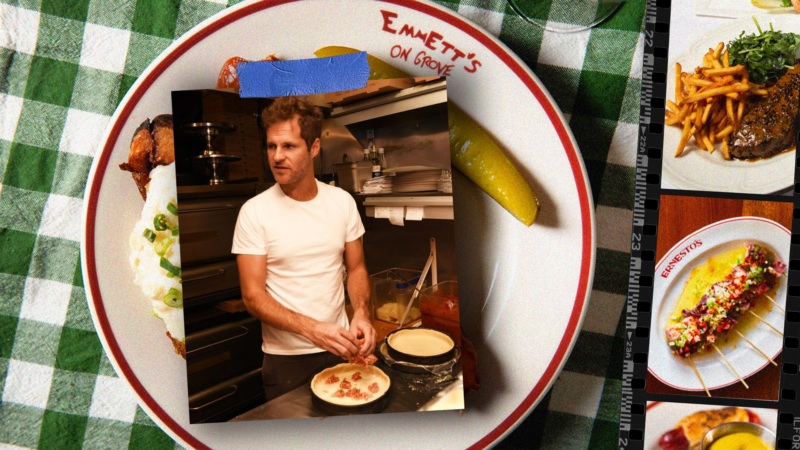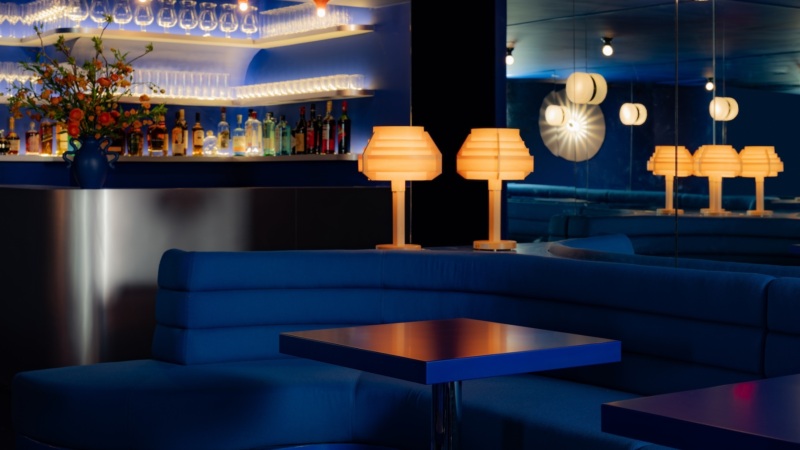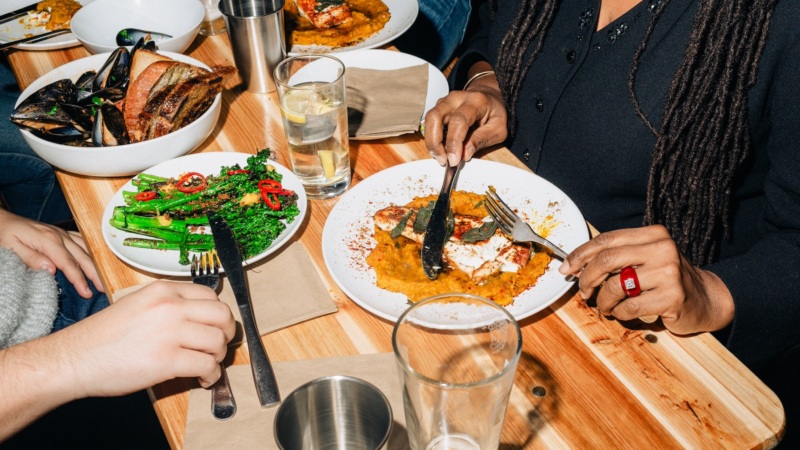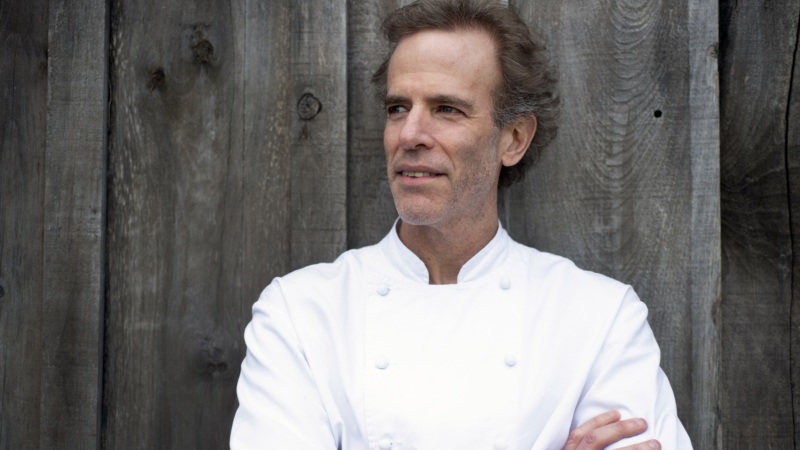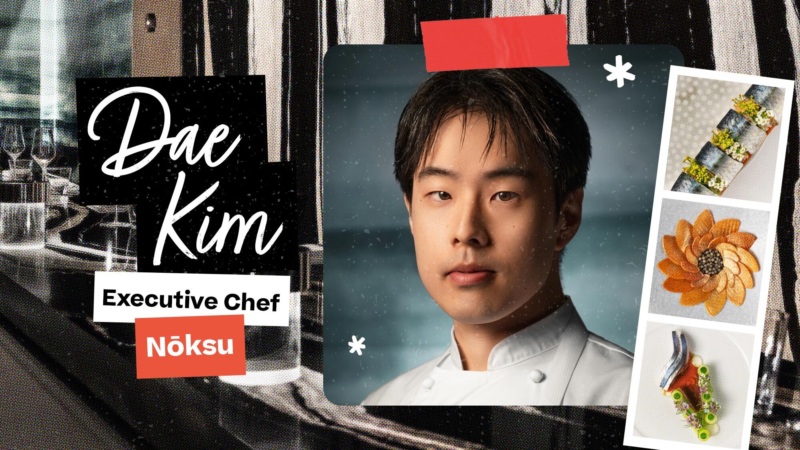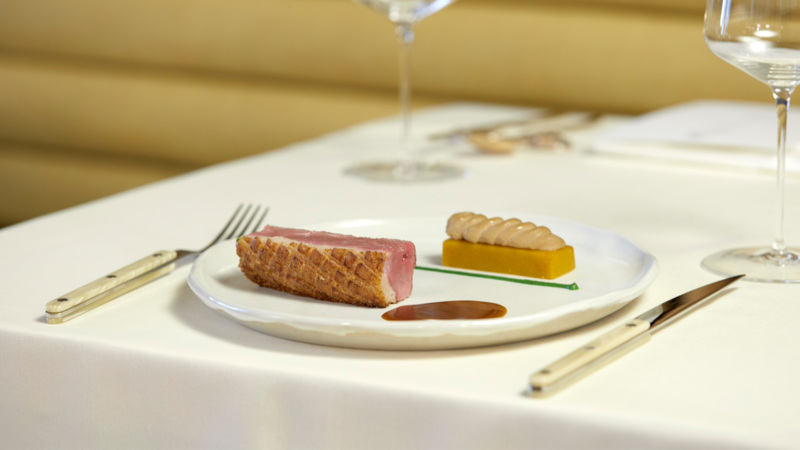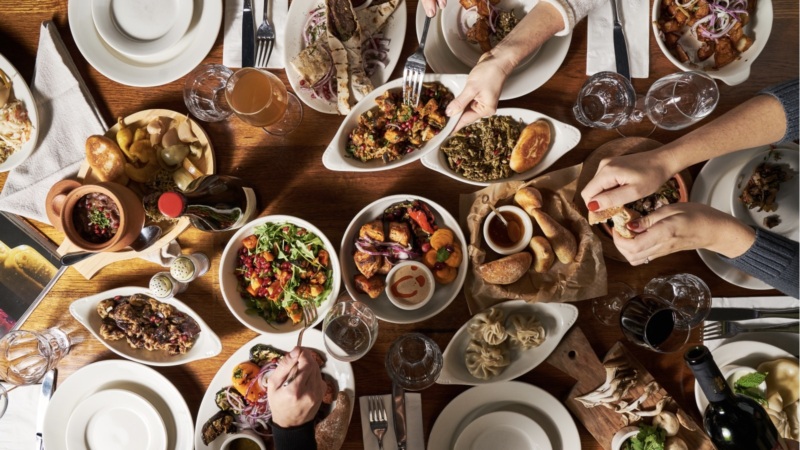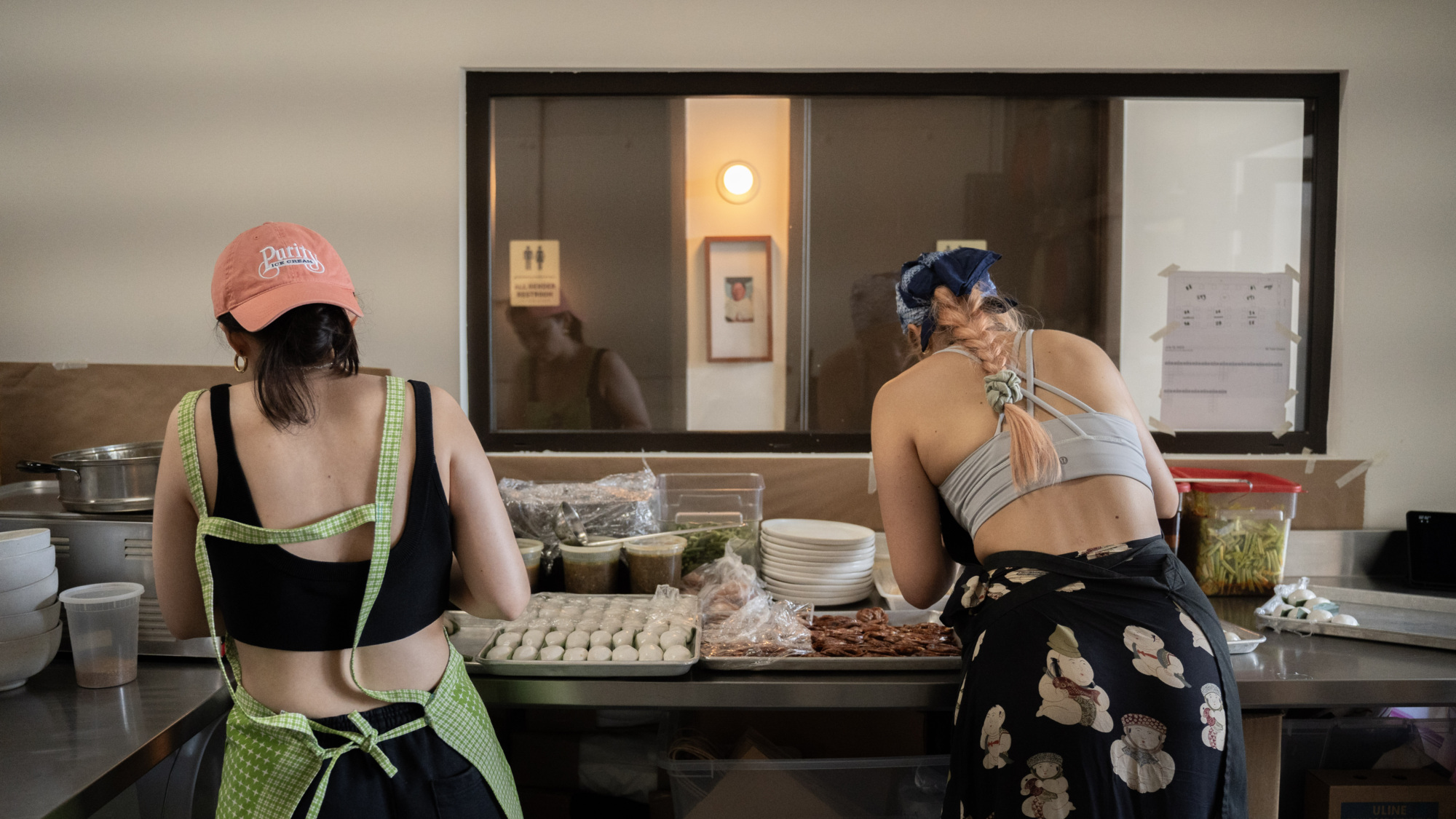
Today’s Pop-Ups See a Different Restaurant World (For A Limited Time Only)
A few weeks ago, the loftlike tasting room at Hana Makgeolli in Greenpoint, Brooklyn transformed from a Korean sool brewery into a pop-up dinner party full of Sichuanese specialties like mapo tofu and beef tripe in chili oil. The event was a one-night-only collaboration between the brewery and Charlene Luo, who runs a dinner party series called The Baodega. Luo, who works full-time as a data scientist, runs her pop-up as a side project. But her homestyle Chinese cooking has an avid following, which was enough to grab the attention of the team at Hana.
“The idea is to invite our friends and fellow creators and give them a space where they can share their food with other people,” says Alice Jun, Hana’s founder and brewer.
While the discourse over restaurants lately has focused on impossible reservations at name-brand restaurants, a glance through Resy’s special events page reveals an endless scroll of pop-up collaborations, which center intimacy and a personal connection that is increasingly hard to come by in restaurants.
In the summer of 2023, these might just be the most underrated dining experiences in New York City.
Of course, pop-up dinners have been with us for a long time — the last pop-up golden age in the 2010s gave us concepts like Maharlika in NYC and LudoBites in L.A. — but in this quirky moment in dining history, they have served to reflect a particular culinary zeitgeist. Right now, New York’s current cohort of pop-ups, mostly based in Brooklyn, are not so much ephemeral nights out filled with good food and niche wines (or makgeolli), but a collective reimagining of the experience of dining out.
The size and substance of today’s pop-up scene in New York is unquestionably a product of the pandemic. According to the National Restaurant Association, the city lost over 200,000 restaurant jobs at the height of Covid. Impacted line cooks initially turned to events, mutual aid efforts, and cottage businesses to make ends meet. “People started doing the pop-ups mostly for survival,” says Nate Cox, the head chef at Prima wine bar, who runs a Caribbean pop-up concept Big Chune. But pretty soon, at least for some cooks, pop-ups turned into a more meaningful way to work.
A lot of that hinged on an attempted shift in the dining balance of power — away from a “customer knows best” ethos towards chefs’ equivalents of a self-care era. Specifically, the pandemic hiatus gave many young-in-their-careers cooks time to reflect, and that prompted a flood of dissatisfaction with the realities of working in a typical restaurant. “The brief time that I worked in a kitchen, as a woman of color, I can’t say that I was treated really well,” says Nadia Agsen, who left traditional kitchens to start a Filipino pop-up, Pica Pica. The familiar pressure points of the service industry — low pay, physical labor, frequent abuse — were finally being viewed as unacceptable. “We saw this great shift in how we want our restaurants to look,” says Trevor Lombaer, who runs the Thai American concept Little Grenjai with his partner, Sutathip Aiemsaard.
The first of these actually began before the pandemic; concepts like Ha’s Dac Biet touted street cookouts and restaurant takeovers. The arc of COVID expanded that and, in the past year, the scene has snowballed into a profusion of limited engagements: Gangjin, Kreung Cambodia, Banchan by Sunny (which now has a full-time home at Achilles Heel in Greenpoint), Kia Cooks, Patikim, Datcha 46, Café 99 are just some of the concepts taking over at popular host venues, largely in Brooklyn, like Rhodora Wine Bar and Winona’s.
While every concept is unique, there are some universal truths in this community.
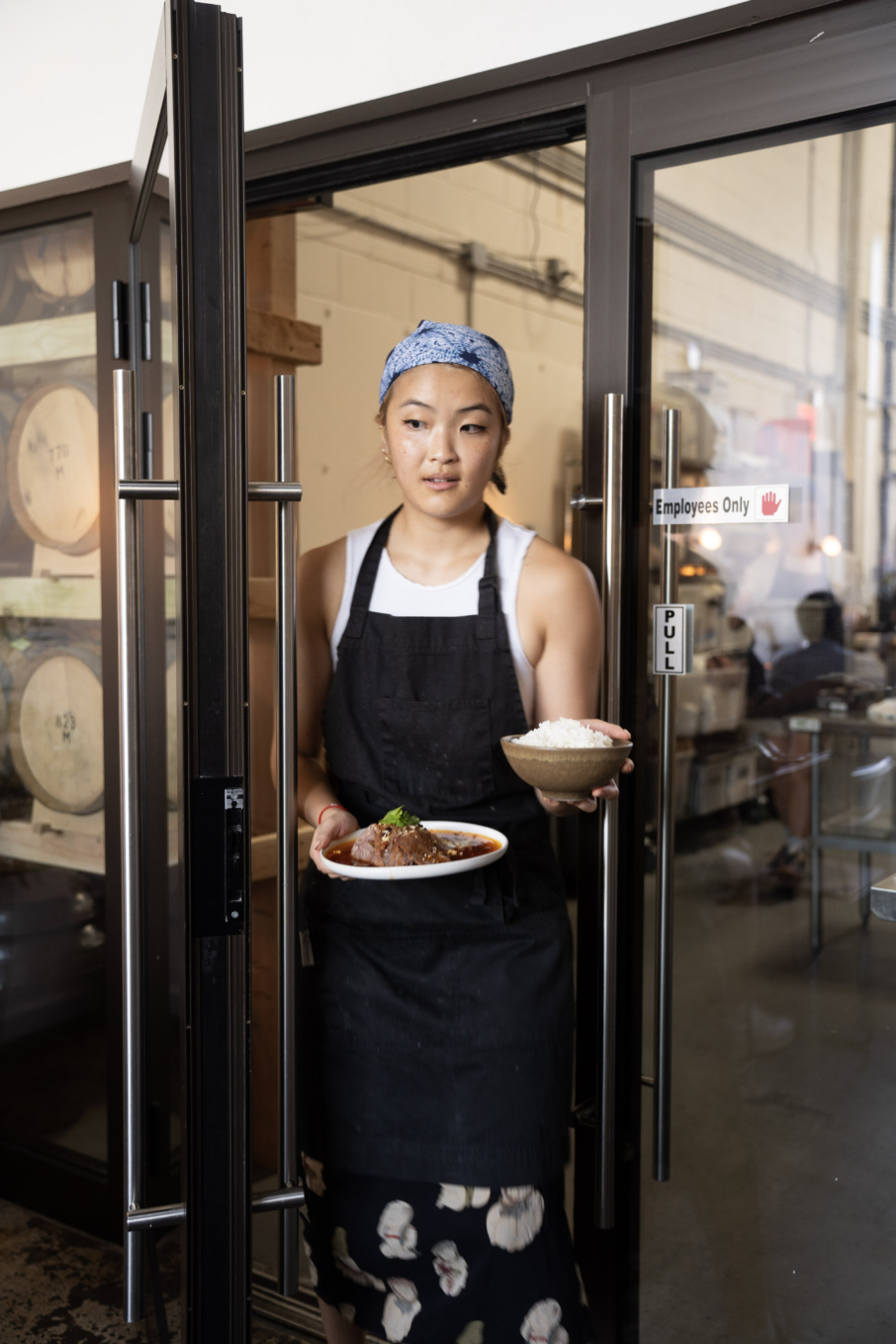
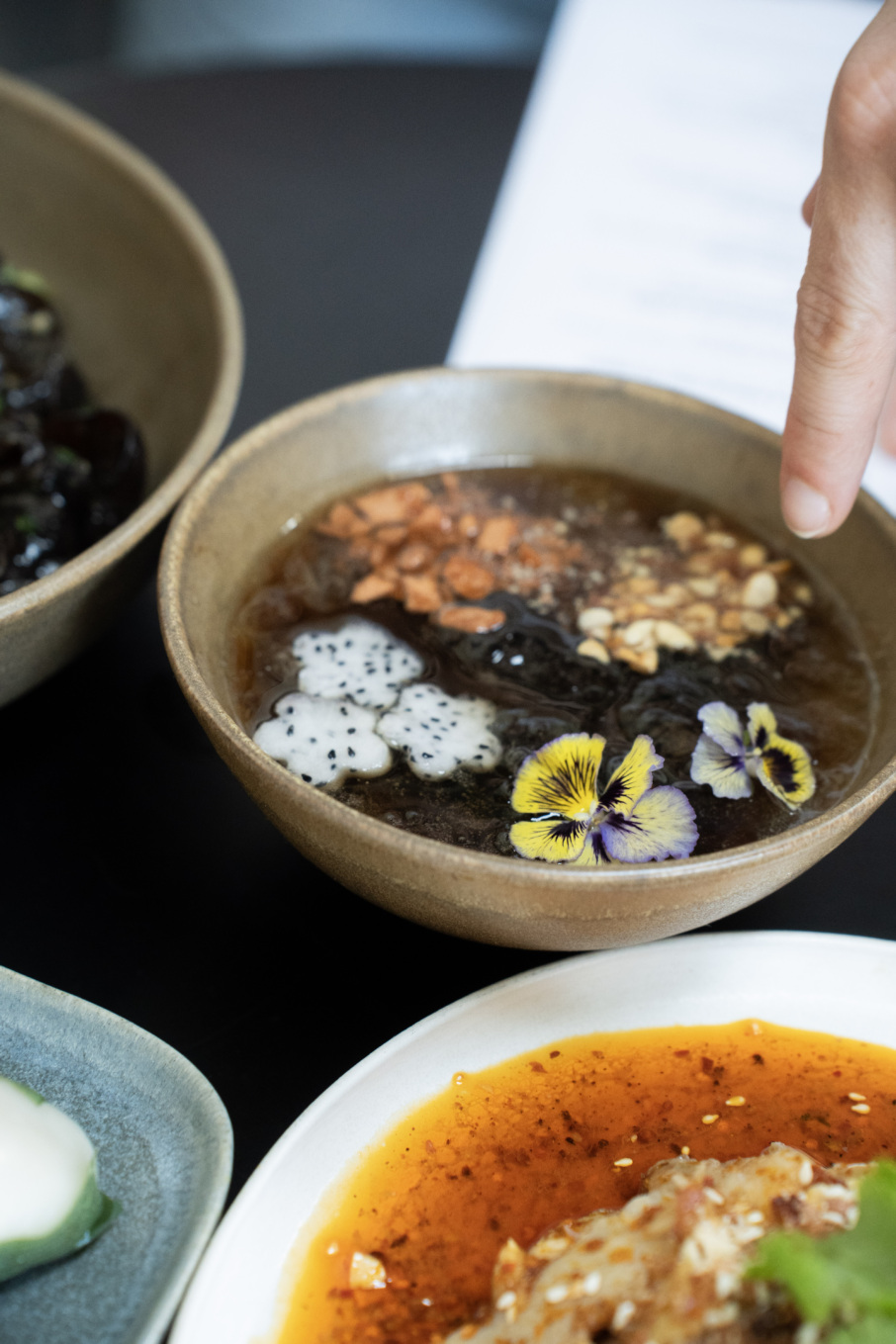
First, there’s an open invitation to get personal. “It’s such a cool community to be a part of because everyone is telling a really personal story,” Agsen says. Pica Pica is shaped by Agsen’s Chinese-Filipino and Hawai’ian heritage (her father is Middle Eastern, a side she has yet to explore at her pop-ups). Second, there’s a responsibility to create what the chefs describe as a safe space within the pop-up. Not just a metaphorical environment where openness is encouraged, but a literal physical safe space. “There should be places that people feel comfortable, especially the people who work in them,” says Cox.
Objectively speaking, pop-up chefs are free from the typical balls and chains of restaurants: rent, routine payroll, and other financial obligations. Thanks to a network of hosts willing to front these overhead costs, pop-up chefs are largely untethered; at liberty to cook what they want, when they want, where and with whomever they want. Perhaps most crucially, pop-up chefs avoid the pressure to keep cooking when burnout is imminent. “I can control my hours, my teams, I can be a better example, hopefully, and I don’t have to worry about anything else besides the food for that night or two,” says Jay Rodriguez, the chef and owner of Hera, a seasonal, vegetable-driven pop-up concept and supper club.
In other words, pop-ups are largely a lifestyle for their creators, whereas a restaurant can become your entire life. When I was coordinating my interview with Agsen, she was finishing up a week-long European rest and recovery trip after an intensive breadmaking class. A day after our chat, Rodriguez was jetting off to the Jura. Scheduling a calendar of sporadic events gives these chefs the opportunity to find a different path to work-life balance. It also allows them the chance to pursue other projects. “Maybe you’re putting on weddings, or you have a cookbook opportunity, or a brand partnership; you can do that all through pop-ups,” says Lombaer.
To be fair, it’s not all sweet gigs and glory in today’s pop-up world. There is plenty of risk and precarity built into the model, as seen in 2021, with the sudden halt of a residency by Ha’s Dac Biet and Kreung Cambodia at the Williamsburg restaurant Outerspace, immediately after a New York Times review. The details of that implosion remain cloudy, but it underscored the way in which these new chefs tried but ultimately failed to avoid some of the pitfalls of traditional restaurants.
Still, starting a pop-up in the post-pandemic era requires little else than an Instagram profile, some liability insurance, and a place to store and prep your stuff. “People who had never worked in a restaurant started doing pop-ups,” says Cox, who added that his own background is in art.
Hosts, who are the ones paying the rent and other bills, can also see manifest benefits — whether it’s boosting revenue on slow days or attracting potential new customers. But there are also more philosophical motivations. “Having a space is a privilege,” says Jun, of Hana Makgeolli. “Providing resources and support to people who are coming up in the industry is important.”
This inevitably raises questions of tenure and “paying one’s dues” in the industry, but it seems like that old sentiment, at least in this circle, is going out of fashion. As Kevin Yoo, the tasting room manager at Hana Makgeolli, describes it, the pandemic pushed a lot of talent out of restaurants, into a freelance-style hustle. Previously, cooks who weren’t tied to a specific venue might have been relegated to the private chef circuit (which was far less prestigious than it is on TikTok these days). “The chefs of these pop-ups, they’re still chefs. But in the past, that wasn’t an industry accepted term,” says Yoo. Does that mean being an independent creative is just as legitimate as a salaried, capital-c chef? “I think chefs are just more open minded to break out of that mold,” Yoo says.
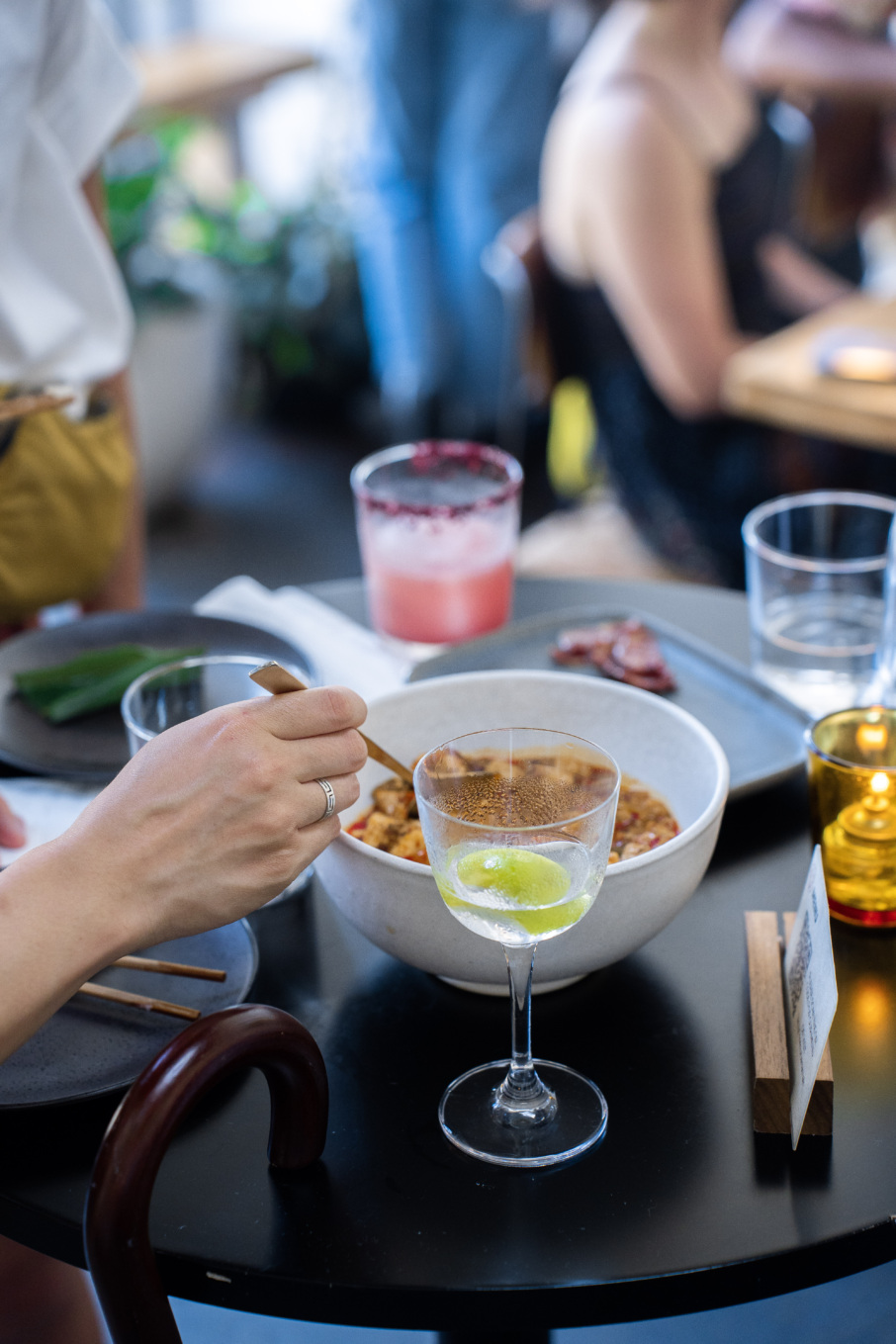
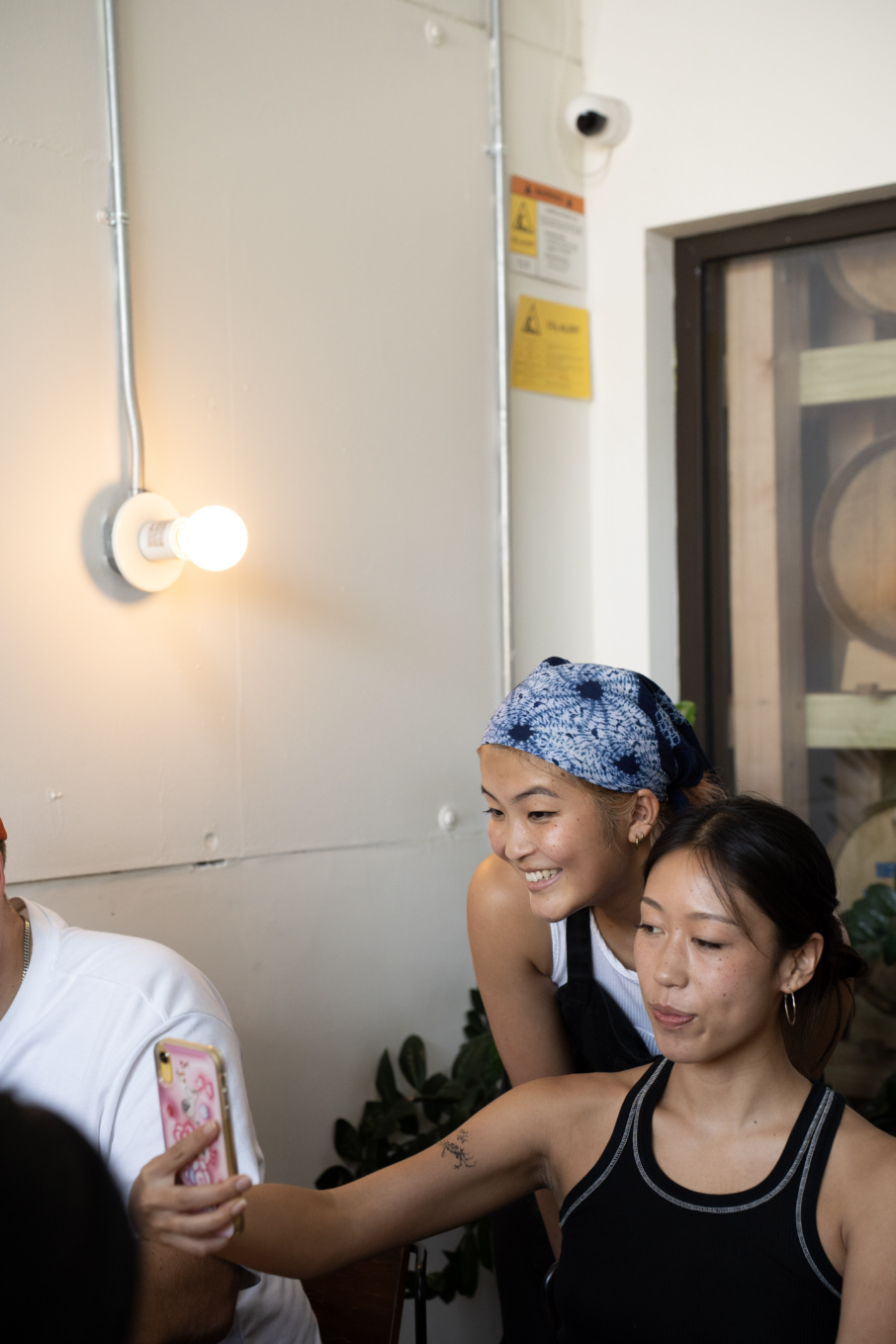
You might consider this the restaurant parallel to the corporate world’s raft of “quiet quitting”— these young cooks likewise don’t see the value in trying so hard to chase down traditional career paths. “I don’t feel like that’s unique to cooking, it’s a phenomenon that’s happening in the culture in general,” says Cox. But also fueling this falling out with corporate kitchens is a recent pendulum shift away from marquee, multi-million-dollar openings towards experiences that replicate the intimacy of a pop-up. It’s no coincidence that New York’s most buzzy openings happen to also be petits wine bars with really great food, from Foul Witch to Libertine. For that matter, popping up is not quitting at all; being ephemeral means having to create an entire dining experience from scratch, over and over.
These conversations are a steep departure from how we, as diners, have been taught to eat out. The traditional standard of knowing exactly where, when, and how often you can have a chef’s food is practically built into the customer bill of rights. But for the chefs in this budding community, accessibility isn’t always the primary concern. At least, not in the traditional sense. “It has to do with connecting on a vibe,” says Lombaer.
In other words, pop-up chefs and hosts are happy to appeal to a select group of customers who willingly embrace the idiosyncrasies of a roving concept. Sometimes there will be a menu, sometimes there won’t. Maybe you’ll discover a cocktail that was created for one night only, never to be seen again. Or maybe the second course takes a little longer as the newly assembled kitchen team figures out its rhythm. A meal like this requires the right customer, which is not necessarily every customer. But also, pop-ups will always be a niche dining experience, one small part of a bigger restaurant ecosystem, to be considered alongside every other option — the formal, the fine, and the neighborhood frequent.
That brings us to perhaps the biggest question: Can this last? After all, the essence of a pop-up is its impermanence.
That brings us to perhaps the biggest question: Can this last? After all, the essence of a pop-up is its impermanence. And the traditional industry is experiencing an unprecedented rally; restaurant cook jobs are expected to grow by 36% between 2021 and 2031 (compared to 5% overall job growth). The citywide count of newly opened restaurants, recorded on every Hit List and Heat Map, is full of conventional restaurants operating in their conventional ways. It is far easier to do things just as you like when you only have to sell out one or two dinners a month.
Which is why at least some of these pop-ups are evolving into their next phase — transferring the good vibes into a permanent brick and mortar space. While some elements will inevitably be lost (goodbye, work-life balance) many in this budding community are hopeful that they’ll have a rooted platform from which to embody the values that defined the groundswell. “I can have a headquarters for my ideas of how we can make restaurants more sustainable and better for everybody involved,” says Rodriguez, who is in the early stages of looking for a space.
Lombaer and Aiemsaard, for instance, are eyeing a late summer opening of Little Grenjai in Bedford-Stuyvesant. There are some elemental benefits to cooking in one place. “I can’t wait to have enough space to move around,” says Lombaer. But they are determined to do it their way. “When we start this restaurant, I want our dishwasher to be the best paid dishwasher in the area,” he adds. With a legion of fans from the sold-out pop-up days, maybe they’ll be able to do it.
This path is one being pursued by most of the chefs and hosts I spoke to; they all want to right a dining balance of power that was fundamentally out of whack a few years ago. They want to finesse the delicate push-pull between service staff and served, in a way that feels more equitable. They want to find an equilibrium between creativity, collaboration, and commerce. Whatever their plans entail, and whatever the risk, for many, there’s no turning back. “The floodgate has opened,” says Yoo. And it’s all converging at a wine bar in Brooklyn, for one night only.
Mahira Rivers is a restaurant critic and writer based in New York, and Resy’s dining columnist. In addition to spending five years as an anonymous inspector for The Michelin Guides, her writing has been published in The New York Times, New York Magazine, Food & Wine, GQ and elsewhere, and recognized by the James Beard Foundation. Follow her on Twitter and Instagram. Follow Resy, too.





